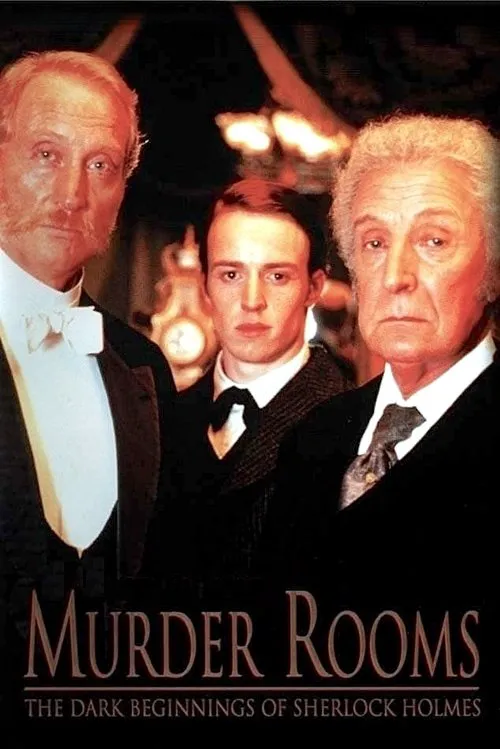Murder Rooms: The Dark Beginnings of Sherlock Holmes

Enredo
In the Scottish capital of Edinburgh, a young and ambitious medical student named Arthur Conan Doyle was on the cusp of a journey that would change his life forever. It was during this time that Doyle would meet a man who would not only inspire him but also shape the iconic character that the world would come to know as Sherlock Holmes - Dr. Joseph Bell. The year was 1881, and Doyle had just begun his studies at the University of Edinburgh Medical School. It was here that he would cross paths with Dr. Joseph Bell, a renowned physician who was not only a brilliant diagnostician but also a skilled pathologist. Bell's expertise lay in his ability to deduce a patient's condition and diagnosis based on their physical appearance and behavior, often by simply observing their body language and other physical characteristics. This unique approach to medicine was something that would later influence Doyle's writing, and more specifically, the character of Sherlock Holmes. The initial encounter between Doyle and Bell took place when Doyle joined Bell's clinic as a clerk, tasked with observing and assisting the great doctor. Doyle was immediately struck by Bell's intelligence, his vast knowledge, and his extraordinary ability to piece together seemingly unrelated information to arrive at a diagnosis. This was something that caught Doyle's attention, and it wasn't long before he realized the potential of writing about a character who shared these qualities. Over the course of several months, Doyle worked closely with Dr. Bell, learning from him and observing his approach to medicine. He saw firsthand how Bell's exceptional powers of observation, combined with his vast knowledge, allowed him to diagnose even the most complex cases. As Doyle learned from Bell, he began to imagine a character who possessed these same abilities, and the concept of Sherlock Holmes started to take shape in his mind. Doyle's interactions with Bell also taught him the importance of critical thinking and how it could be used to unravel even the most puzzling cases. Bell's approach to medicine was all about observation, deduction, and logic, and Doyle was fascinated by these principles. He saw how Bell's mind worked, and how he was able to break down complex information into manageable pieces. This approach would later become a hallmark of Sherlock Holmes' own method of solving mysteries. As the months passed, Doyle's admiration for Bell grew, and he began to see him as a kind of intellectual father figure. Bell, in turn, was impressed by Doyle's intelligence and his curiosity about the world around him. He encouraged Doyle to think for himself and to challenge conventional wisdom. This relationship would prove to be a pivotal moment in Doyle's life, and it laid the foundation for the creation of Sherlock Holmes. Years later, in 1887, Doyle returned to London after a brief stint as a general practitioner in Southsea. It was during this time that he would draw upon his experiences with Dr. Bell to create the iconic character of Sherlock Holmes. The adventures of Holmes, the brilliant detective who solved the most complex and intriguing cases with ease, captivated the imagination of readers around the world. And at the heart of it all was Doyle's debt to the incredible Dr. Joseph Bell, the man who had inspired him to create one of literature's most enduring characters. The TV movie 'Murder Rooms: The Dark Beginnings of Sherlock Holmes' effectively brings to life the story of Doyle's time at the University of Edinburgh Medical School and his encounters with Dr. Bell. This poignant portrayal of a pivotal moment in literary history is a testament to the enduring legacy of Sherlock Holmes and the man who inspired it all - Dr. Joseph Bell.
Resenhas
Recomendações



